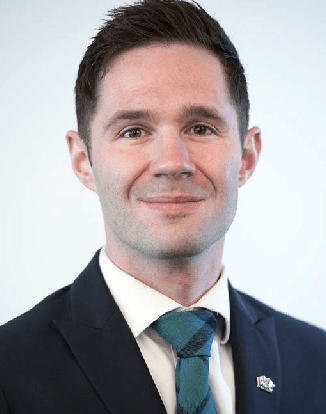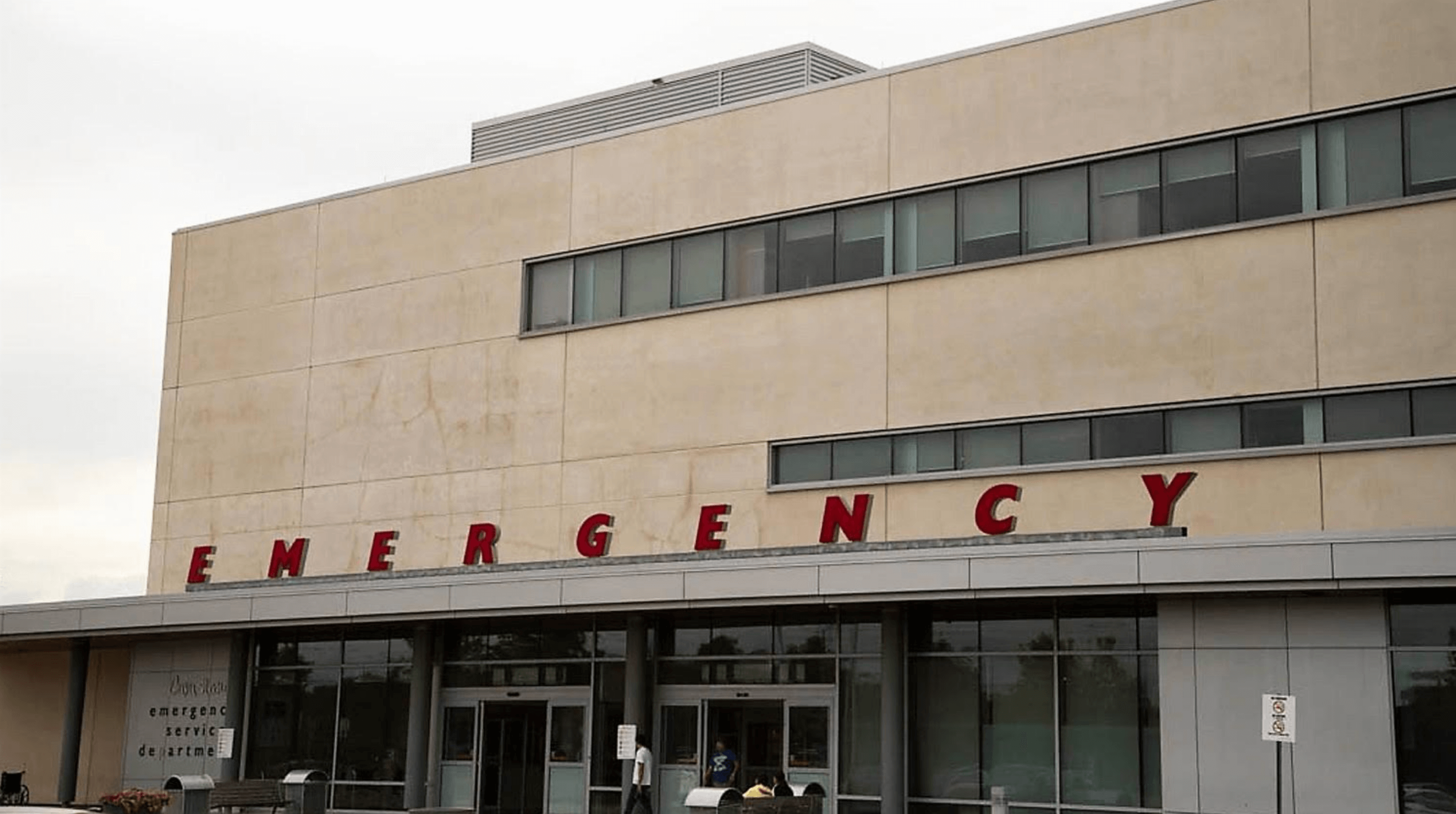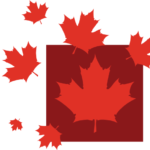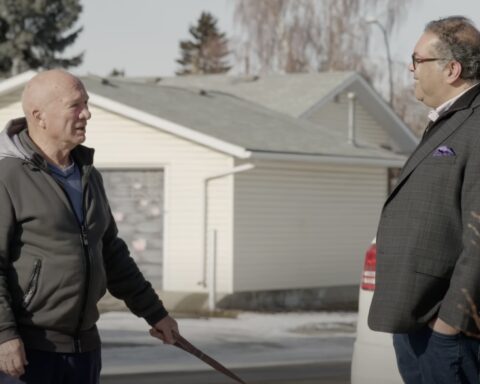As Canada tries to contain the COVID-19 pandemic, we may be overlooking an incredibly valuable resource: immigrant doctors. However, physicians who immigrate to Canada face a burdensome and challenging process to become accredited.
This was the topic of discussion in a recent episode of The Macdonald-Laurier Institute’s Pod Bless Canada podcast that featured special guest Robert Falconer, a researcher at the University of Calgary.

MLI: How many landed immigrants in Canada are physicians that have practiced and/or received their medical training in other countries?
Robert Falconer: According to the 2016 Census, which is the last time we had a full scope of the entire labour market field in this area, about 20 percent of the total number of physicians in Canada are immigrants. That means about 28,000 people here in Canada are immigrant physicians. Since that time, about another 3,500 have immigrated to Canada, and it’s actually a fairly similar number when you’re looking at other health care professions as well. If you look at the total health care system here in Canada, about 24 per cent of our health system is made up of immigrants that include nurses, pharmacists, dentists, etc. That 24 per cent is about 300,000 people or so.
MLI: What is the current accreditation process for immigrant doctors? How does it work? How long does it take to be able to practice on average? And what are the current costs to getting accredited?
Robert Falconer: First, when immigrant health care professionals – and specifically physicians – arrive in Canada, they have to go through a licensing process. Other immigrants who arrive here often work in unlicensed professions. Let’s say you were an immigrant and a researcher like myself. You’re a researcher and you wouldn’t need a licence to do that, so you can start working right away.
However, for immigrant physicians, once they move to Canada, they have to go through a process wherein they take several exams, including at least two qualifying exams. Then they have to register with the Medical Council of Canada’s physiciansapply.ca website. They have to submit their credentials from their countries of origin, showing that they have been educated as doctors.
They also have to do a language assessment – that’s an important step. They have to do an academic English or French test. Of course, most immigrants, especially those immigrating under the economic class, will have already written a language test as part of their immigration process moving to Canada.
Once they do that, we go to the big hinge point where a lot of immigrants get stuck in the system. The Canadian provinces generally require at least two-years of residency in order to work in Canada as an immigrant physician or any sort of physician, and many countries don’t actually have the same two-year residency requirement. So even though a doctor may have been working in his field for quite a number of years and they don’t have that two-year residency, which is considered sort of a postgraduate education, they have to find a residency within Canada. That means they have to get one of the coveted residency spots in order to get the training they need to become fully licensed here. If they happen, for whatever reason, to have that residency already because maybe they’re from a list of a few specific countries, they can then do what’s called a Practice Ready assessment, which is a short assessment of their ability to practice in Canada.
“Only about 55 percent of internationally- trained doctors actually end up practicing as doctors in Canada.”
To reiterate, there’s several tests they have to do. They have to submit their credentials, do the language test. If they have two year’s residency already, they can just do a short-term assessment. If they do not have these two-year residencies from another country, they’ll have to get a residency spot in Canada and there are very, very few spots for internationally-trained graduates in medicine.
Total time it takes for them to do all this is about three to five years, if they can get their foot in the door. But that’s on a range of about one to ten years. So again, you can have some people who get accredited really, really fast, so about one year. But you have some people who do get their foot in the door but it’ll take ten years to finally get fully through that door. As a result, according to info we have from Statistics Canada, only about 55 per cent of internationally-trained doctors actually end up practicing as doctors in Canada, and that’s compared to about 90 per cent of those born in Canada who are trained medical physicians end up practicing.
You also have to look at the whole lump of money that has to go towards accreditation – and the reason I use that word is that we’re not just looking at fees, but also books, the resources needed to study for the test, forgone income, etc. You’re looking about $14,000 on the low end to approximately $28,000 on the high end. And some studies have come out showing that this is about 42 per cent of an immigrant’s annual income during the reaccreditation process. That means a little under half of an immigrant’s income will go towards just recertification during their first few years in Canada.
MLI: Do physicians from different countries face the same barriers to accreditation? For example, does a physician from Hong Kong or Australia, for example, have the same barriers as a physician from India?
Robert Falconer: The barriers are actually quite different. If you’re a U.S. immigrant coming to Canada then it’s practically the same process. We kind of treat U.S. immigrant physicians or American-trained immigrant physicians the same way we do Canadian graduates. Other immigrants from the Anglosphere, such as the U.K., Ireland, Australia, etc., don’t have to go to the examination process necessarily. They do have to get their credentials assessed and they might have to get the residency requirements, but there is a consideration of the fact that they were educated in an English-speaking country. And I should say there’s plenty of other English- speaking countries beyond just those numbers that I’ve mentioned. But there is that special consideration for these Anglosphere countries. Again, I’m thinking Australia, Ireland, Hong Kong, New Zealand, etc., where they don’t have to go through the same rigorous examination process.
MLI: Are there any other similar medical professions that face these challenges in becoming accredited in Canada, for example, nurses?
Robert Falconer: Nurses certainly do have to go through a similar process of getting their education re-certified, meaning that they have to get accredited or recognized. It’s not as rigorous as the physician process, but it can certainly be very onerous. The other are lab technologists, and of course, this is very relevant in the fight against COVID-19. A huge part of our transition strategy to shift out of this physical distancing and self-isolation phase to kind of a quasi-normal state relies on testing and tracking positive cases of COVID-19.
Laboratory technologists often have a difficulty getting their foot in the door if they’re internationally-trained. The reason? A lot of the colleges regulating those professions here in Canada mostly recognize the education done through our two-year Canadian diploma programs. You are totally right in bringing up that point. Nurses and lab technologists and other health care-related professionals also face a pretty onerous and expensive process. Not quite the same level as physicians, but again, it’s still a considerable amount of time and money that gets spent in making sure that they’re capable of practicing within a Canadian setting.
MLI: Are there any alternative ways that immigrant doctors can become accredited to practice in Canada without going through these regulatory bodies? Off the top of my head, I know a few people, for example, who have applied to go back to medical school in Canada in order to practice despite being trained abroad.
Robert Falconer: It’s common for immigrant physicians to go back to school to get their training recognized here in Canada. When you look at qualitative studies on this, it’s often a frequent complaint. My work is mostly quantitative, but if you look at qualitative research on the recertification process, you’ll often hear stories of physicians who essentially redo medical school. And their test scores and their personal experiences will reflect that they already know all this stuff. Some provinces, Alberta is one of them, have a health care assistant model (which we shouldn’t necessarily confuse with the associate physician- specific title here). Immigrants who might not be fully recognized, but may have completed some of the steps, would be able to work in a limited setting within hospital settings under the supervision of a doctor. That might be where they do very basic tasks like taking patient histories, filling out charts, etc.
So, to put it succinctly, yes, a lot of them will actually do their education all over again, or they might go for what we might consider a lower tier within the health care profession. I don’t use the word lower tier to pejoratively refer to nurses and technologists and other health care professionals; more that when we think of the amount of training that has to go into what a doctor does, we might see people trained as doctors choosing a less well paid position and one that doesn’t require as much eligibility requirements.
MLI: What’s the rationale behind this accreditation process?
Robert Falconer: The big one is public health. There is always this concern, and I think it’s a reasonable concern to have, about whether or not an immigrant (or anybody else really) can provide the same level of quality patient care as Canadian-born or Canadian-trained physicians. And when I say reasonable, I don’t necessarily mean the barriers placed there are reasonable. I mean that that the rationale for actually wanting to ensure quality of care is a reasonable rationale for having these barriers.
Now, when you ever look at papers or other research on occupational licensing and the reason why we have it, the big question is whether the barriers that we have setup actually ensure quality? I think it’s one thing to say that, for whatever reason, if it was proved that there was inadequate level of care from immigrant physicians, there would be a reasonable process to make sure that we could verify those who provide good patient care and those who cannot. The second question I have to ask is whether the licensing model we currently have is the best way to ensure that?
I think on both of those counts there’s reason to question the current status quo. Plenty of empirical studies have shown with a pretty large number of observations that the level of care provided by internationally-trained or immigrant physicians is roughly equal to that provided by Canadian-born or American-born physicians. The other thing to consider is, again, whether the current model is able to “weed out” those who don’t provide high levels of care. And I think there’s reasons to indicate that is not the case.
“The level of care provided by internationally-trained or immigrant physicians is roughly equal to that provided by Canadian-born or American-born physicians.”
MLI: What are some of the reforms you would recommend to this current model?
Robert Falconer: It’s useful to consider what’s being done around the world right now. In response to COVID-19, a number of countries have chosen to reassess how they license immigrant health care professionals. And when I say countries, I should also say health care bodies within those countries, so professional boards and colleges, for example. Reforms exist on a bit of a spectrum.
On one end of the spectrum, we have “get-them-in-the-door” type reforms. Two examples are New Jersey and New York, where the governors of both states have issued directives allowing immigrant health care providers to provide patient care without a licence, with very minimal requirements. In the case of New York, it’s to just have one-year postgraduate training. In the case of New Jersey, it’s as long as you’re licensed in another country, you can be licensed or you can provide patient care within the United States.
 On the other end of the spectrum you have the Irish Medical Council. So again, this would be a very reasonable reform – a bare minimum reform that I’m very interested in – where you waive the registration fees for immigrants; meaning that immigrant physicians who want to practice in Ireland could potentially register and re-certify without cost to them personally. They’ve also hired them to work in, again, these lower-tier professions, in this case, as health care aides while they’re waiting for recertification. And they’ve also promised to expedite that recertification. And what I mean by expedite is review them in a timelier manner. So that’s something on the other end of the spectrum.
On the other end of the spectrum you have the Irish Medical Council. So again, this would be a very reasonable reform – a bare minimum reform that I’m very interested in – where you waive the registration fees for immigrants; meaning that immigrant physicians who want to practice in Ireland could potentially register and re-certify without cost to them personally. They’ve also hired them to work in, again, these lower-tier professions, in this case, as health care aides while they’re waiting for recertification. And they’ve also promised to expedite that recertification. And what I mean by expedite is review them in a timelier manner. So that’s something on the other end of the spectrum.
I’m quite intrigued by a model first piloted in France a few weeks ago and this model – or a similar or somewhat similar model – has actually now been adopted in both British Columbia and Ontario. This is the associate physician model. In this model, when an immigrant physician who has been trained and has worked in another country wants to practice in Canada, especially in relation to public health emergency, we’re able to get them a restricted licence. That’s something similar to an associate physician title. What this means is that they can provide the same care the other doctors provide, but under the supervision of a fully licensed doctor within Canada.
I think that’s quite intriguing because potentially I can see a scenario where you end up fully licensing that associate position, let’s say with the approval of a supervising physician. We’ll see how things bear out, but I’m most intrigued by this associate physician model.
But again, that exists on a range of reforms. There is the “get-them-in-the-door” type model. If worst came to worst here in Canada, most provincial health care authorities do actually have the powers to break that glass and let that happen. Here in Alberta, under the Government Organization Act, the health minister during a public health emergency can allow almost anybody he wants to provide patient care. I don’t think he would do that, but you could see a scenario where if it got serious enough here in Alberta, the health minister could authorize internationally-trained physicians to provide patient care without a licence. And again, that’s on one end of the spectrum. On the other end of the spectrum is the consideration of just the fee structure and the timeliness of registration.
“I can see a scenario where you end up fully licensing that associate position, let’s say with the approval of a supervising physician.”
MLI: If we do allow for a timelier and more accessible accreditation system, what do you think are the implications for the labour market more broadly?
Robert Falconer: I think we could probably see a significant number of physicians get approved here in Canada and apply quickly. Roughly per year, we graduate about 2900 physicians from our own schools. When you look at the number of immigrant physicians who move to Canada every year, that’s about 1000 immigrant positions per year on top of the 3000 or so that we graduate from our schools — so we’d be almost graduating another third of our medical school graduates in total. We could pretty rapidly increase the number of emergency health care professionals. That is something that Sweden and Norway do; they actually have legislated recertification timelines. That means once you start to re-certify, it doesn’t mean you’ll get it blanket approved, but you’ll have your answer within a fairly short period. I believe in Norway, it’s about 60 days and in Sweden, it’s about 120 to 150 days.
By the way, that’s relevant because Canada is actually at the lower end of the OECD spectrum of doctors per population. For reference, Canada has about 2.8 doctors per 1000 Canadians. Again, there are only about seven other countries below us in that list. Austria, by way of contrast, is at the top of the list; they’re at 5.2 doctors per 1000 people. And the average is roughly about 3.5, give or take. We could rapidly boost the number of physicians per capita here within the country. And that’s one implication of a faster licensing process.
I think we could also consider modifying either the fee structure or the timeliness with reference to those who agree to go serve in a rural location, as rural health care has been an issue for the past number of years. We might be able to increase the number of rural physicians in a reform model. There’s a number of implications that come with this. I know here in Calgary alone, if we just licensed the immigrants from 2018, we’d be looking at boosting the number of physicians per Calgarian by about 15 per cent or so.
MLI: One of the concerns is that Canada has one of the most expensive health care systems. What are your thoughts on the long-term costs of allowing more physicians to practice within Canada?
Robert Falconer: Well, again, we’re doing a little bit of crystal ball gazing here. Of course, you can see a significant spike in health care-related costs with physicians added. There is a public benefit to the coffers when we have a healthy population with adequate access to health care, so there might be some cost savings there as well.
I’m always hesitant to make a financial argument against faster recertification. If the argument is that health care is too expensive, we should be looking at ways to reduce the cost, not necessarily reduce the number of providers. I’m not sure if reducing the number of health care providers is necessarily the best way to reduce costs. There’s been a lot of work recently on looking at how do we pay physicians. Right now, most of Canada is operating under a fee-for-service model. We could consider something like a capitation model or some other mixed method of payment for health care providers.
To be frank, yes, you could see health care costs rise with more physicians allowed to practice here in Canada. Again, there would be some potential public benefit in a healthier population. But I don’t think necessarily we should make a financial argument against recertification in terms of public finances. I think we should really look at the public finance argument as a separate issue from the recertification one.
“If the argument is that health care is too expensive, we should be looking at ways to reduce the cost, not necessarily reduce the number of providers.”
MLI: I would also argue that on an individual level, immigrant physicians are bearing the brunt of these enormous economic costs to become accredited to practice in Canada and a more timelier and accessible system may allow for broader participation among immigrants in the labour market, resulting in savings in public finance more broadly in Canada.
Robert Falconer: Absolutely. And by the way, that brings up a really good point. One thing I didn’t mention earlier is that there may some need to look at fee waivers for different immigration categories. The example that always comes to mind is from a colleague of mine who works as refugee lawyer. He recently helped one of his clients, a cardiovascular surgeon in Colombia, get asylum in Canada. They are currently driving Uber here in Canada, so even if they could pass the tests, the likelihood of being able to meet the necessary fees to re-certify is very small. We might consider a fee waiver for people like that who come here as refugees. Or we might base it off of your taxes from the last few years. I think those are all very good points.
Like you said, there’s a greater economic argument that if we could reduce either the distance or the lack of availability of getting a doctor, we could see a savings there. Part of the reason why we might have as much trouble as we do, changing the fee structure, is the number of doctors. When you look at public choice theory, sometimes when you limit the number of providers, you increase the power of those few providers. So, who knows? Maybe by adding a more robust health care system when you have more immigrant health care providers, you could potentially look at working and negotiating with them, within the context of the colleges of course, for a change in how we pay physicians here in Canada.
MLI: On a provincial level, what would your policy recommendations be on this issue?
Robert Falconer: It’s a tricky one. What really make Ontario and B.C. distinct is the fact that these new associate physician models have been adopted within the context of the provincial colleges. The colleges are the decision-makers here in this area. The easiest way for this to change here in Alberta would be for the College of Physicians and Surgeons of Alberta to make positive steps, at least positive in my view, towards considering the fees involved with recertification and the process as well.
I’d also get rid of the residency requirement here in Alberta. And sorry, I should be careful when I say residency because I’m not necessarily saying residency in terms of the practice assessments, but residency as in when you move to Alberta from outside of the province, you actually have to reside here for almost half a year before you can even apply for a residency position within the province. Is there a public health justification for that requirement? I would be skeptical that spending weeks or months here in Alberta would make you a more capable or less capable physician if you’re not even working as one in the first place. So that’d be one that I would recommend at the college-level right away.
As for the provincial health ministers, I think they’ll have quite a bit of authority to work with, lobby, and negotiate with the colleges. I think this is something they could certainly advocate and champion, unless we think championing doesn’t matter. I’ll just point out that this is what’s happening in the U.K. right now. The U.K. health secretary has agreed to champion this within the colleges and the certification boards in the United Kingdom. I think that definitely matters. I think that’s one thing the health ministers should really consider.
Again, they also do have this break glass option where if things got serious enough, they could authorize immigrant physicians to provide patient care. And what’s interesting with this, a lot of it is not even about bringing in more immigrant physicians. It’s really about bringing them into the health care system. They’re already living within the country. They just can’t simply practice yet. The health ministers could certainly change that, either lobbying to the different colleges or just authorizing emergency physicians. I think the first one will probably reap more long-term benefits.
MLI: Is there any course of action on a federal level that the minister of health could take?
Robert Falconer: It’s a bit trickier because health care is generally a provincial jurisdiction. But there are some things the federal government could do here. One could be the minister’s council on the issue. They may not be able to action that in the short-term due to the pandemic, but certainly longer-term, they could call ministers to council on the issue and come to some sort of pan-Canadian agreement to allow immigrant physicians easier access to the health care system.
Second, they could leverage the two national colleges – the Royal College of Physicians and Surgeons of Canada and the College of Family Physicians of Canada – and the Medical Council of Canada. Those three bodies have a high level of influence among the provincial bodies. Negotiating with them would definitely be better done at the federal level than at the individual provincial-level.
Third, they could reduce the barriers to inter-provincial licensing – and this actually speaks to a larger issue, which would certainly help immigrant physicians, but would really help all positions in Canada to increase their labour mobility. Right now, a doctor in Ontario can’t necessarily go practice in neighbouring Manitoba.
I’ve seen two options for addressing this. One is to create a national regulatory board and there is some precedent for this. The 2018 Supreme Court ruling on securities basically established that while securities are in the hand of the provinces, the federal government could potentially create an overarching regulatory board with voluntary participation of the provinces. This basically means provinces agree to harmonize their securities policies and be governed by this regulatory board. You could see something like that happen within the health care system, where basically provinces agree to harmonize their licensing requirements and then agree to be regulated at the national level. And that would help both Canadian-born and immigrant physicians practice within Canada.
Two, there’s also what’s called the inter-provincial passport, which exists in the provisions of the Canada Free Trade Agreement, which basically means that immigrants and other health care professionals seeking to jump from one province to the other would still have to pay the necessary fees and get the necessary insurance, but they wouldn’t have to necessarily go through the whole recertification process. More can be better done at the provincial level, but there is room here for the federal government to make strides as well.
MLI: As we fight to contain the COVID-19 pandemic, we’ve seen more immigrant doctors become vocal in wanting to join the front lines in order to help, and I’m wondering if you have any personal anecdotes or similar stories that you could share with us about this?
Robert Falconer: I’ll share one. There was one doctor who I was talking with in Edmonton, originally from India and quite widely practiced around the whole world. They had practiced in Japan and they had practiced in their home country of India. They had practiced in several countries in Europe, and most recently done a stint with Médecins Sans Frontières (MSF)/Doctors Without Borders. But she recently did a stint with MSF in South Sudan where she was practicing as an anesthesiologist. And her comment was: I’ve worked as an anesthesiologist, I’ve helped people with Dengue fever and with Cholera and with other localized epidemics in those areas, I worked with limited supplies and sometimes crisis scenarios, especially when there’s a lot of violence in these areas.
You could imagine that especially refugee and immigrant physicians might be better informed and better prepared to work under crisis conditions, with shortages in these scenarios. And unfortunately, again, her comment was: I am simply having a heck of a time getting re-certified here in Canada. So unfortunately, they are not able to get practising yet. Again, there are these massive financial barriers and very lengthy process of recertification, and as a result, she cannot join the fight against COVID-19. Of course, there’s also that previous example I shared of the Colombian cardiovascular surgeon who, again, is not going to be able to meet those fees driving Uber.
This is an edited transcript of an interview, re-published by New Canadian Media, with the full permission of the Macdonald-Laurier Institute and Robert Falconer.
You can stream an audio version of the entire conversation here.
NewCanadianMedia.ca is Canada’s premier web site dedicated to news and views about the one-fifth of Canadians who are immigrants. You’ll find original journalism from an immigrant perspective along with content produced by our partners in Canada’s ethnic media. Our content provides fresh insights into developments in politics and society, enhancing your understanding of our diverse world.






Great article
I used to worked with these clients: immigrants and the article is very accurate. The solutions/ proposals are really good .
You are bang on target for publishing this interview with researcher Robert Falconer. Not only because of the shortage of health care professionals in the country is affecting the health care service today, but also because these professionals are not provided the opportunity they deserve. Now that the government has allowed ” immigrant” doctors to work (under supervision) it should take a step forward and recognize them as qualified to practice in Canada. I mean that there should not be any need for them to look for residency or do any other course to become eligible to practice in Canada.
I think it is important to not dilute the quality of healthcare in Canada. Some countries, where the immigrants come from, have donation based admission programs even in Medicine, producing less intelligent doctors. The system should screen them out by staying stringent. Four of my cousins are doctors and they make almost as much in our home country as they will here. Good ones never leave. Believe me, we mainly get the bottom of the barrel when it comes to attracting doctors from developing countries.
Good for you that your country is not unsettled by political uprisings and safety issues. Where I come from doctors and their families are been kidnapped and killed. It doesn’t matter how much you earn and how good you are as a doctor, a bullet to your head will achieve the same We won’t blame Canada for how bad our countries are, but we certainly will blame them for convincing us they needed doctors, made us spend lots of money to immigrate here. If you don’t need professionals then let the immigration process reflect what you need E.g nanny, house helps and cleaners. I am sure you are one of those glad that a doctor dry cleans your clothes and polishes your shoes. Canada is luring the best from other countries, taking their money and having them come flush their toilets and live in their basements. It’s sad. I have heard someone boast that a doctor is her child’s nanny.
I think it’s all very nice to consider these things but first answer how many Canadian born kids who qualify for medical school are not getting in each year! And how many more positions have the university’s added to meet the growing demands on our system by forced migration. I’d like you to show a list showing the number of Canadian school graduates each year for the last 30 years! I know one school hasn’t changed.
And how many of our kids determined to pursue the career of their dreams are forced to leave Canada. And how many are returning to Canada so far in dept it’s pathetic. When we can’t provide the education for our own kids we need to stop certifying from everywhere else and start training.
It clearly says that 90 per cent of those born in Canada who are trained medical physicians end up practicing. Did you even read the article before commenting?
I believe her point is there are not enough Medical School and Residency spots available for qualified Canadian students. I believe most would agree more opportunities for Medical Education and a comprehensive way to tap into the value of qualified Immigrant Physicians would benefit all involved
Thank you for focusing light on the problems that immigrant doctors experience in Canada. What obstacles do immigrant doctors face, and how might these issues be addressed?